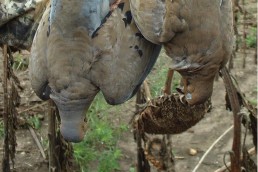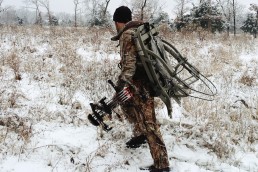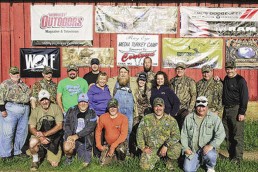Steel Shot can do the Job on Fast-flying Doves
SHARE THIS POST
September 1 means the start of fall hunting and the beginning of dove season across much of the country. I look forward to it as much as any of the other seasons.
What’s not to like? It’s warm out, you don’t have to get up and out the door at a ridiculously early hour, doves make a challenging target and when you get done you have one of the most scrumptious wild meats.
Back to the point which doves make a challenging target. Numerous formal and informal studies reveal the average dove hunter will shoot five shells to bring down one dove. I can usually get my limit with a better shooting percentage than that. But still, most years for me, I’ll pull the trigger more often on a few dove hunts than I’ll fire the rest of the season hunting for ducks, pheasants or whatever I’m pursuing.
It’s likely the same for you, and that’s why this season I’m joining with many other bird hunters and bird lovers to ask the dove hunters to consider stocking up on non-toxic shot (or steel shot) in an effort to voluntarily reduce lead poisoning in doves and other ground-feeding songbirds.
Lead-alternative shot has been the law of the land so long for waterfowl, that many of today’s hunters have never hunted ducks or geese with any other kind of shotshells. It’s accepted, and it’s been proven in numerous studies that incidences of lead poisoning in waterfowl has dropped precipitously. Ducks and geese often mistake pieces of shot for either a seed to eat or a piece of grit their gizzard uses to grind food when they swallow. A single lead pellet in the gizzard of a duck can lead to a fatal case of lead poisoning.
More to the point, a single lead pellet in the gizzard of a dove, goldfinch, field sparrow or any other small ground-feeding bird is just as deadly. And don’t think non-hunting bird lovers don’t know it and that anti-hunters don’t or won’t use that as a premise to eliminate hunting.
Are you enjoying this post?
You can be among the first to get the latest info on where to go, what to use and how to use it!
Currently, all state-managed dove hunting areas require the use of steel or other non-toxic shot when hunting them. I don’t know of any efforts to expand that to private lands, but if the majority of dove shooters hunting on private land volunteer to make the switch, there will be no need for big government intervention.
Here are some worrisome statistics. Data from the Missouri Department of Conservation show on a public hunting area, near Kansas City, Mo., that 1,425 hunters reported firing almost 40,000 rounds of shotgun ammunition on and around 185 acres of managed sunflower and wheat fields. This resulted in the deposition of approximately 2,500 pounds of lead on the entire area, or 13 1/2 pounds of lead per acre of managed dove field or more than 75,000 lead pellets per acre of managed dove field. That’s over twice as many spent pellets laying on the ground than the number of kernels of corn a farmer plants in a cornfield.
According to estimates from the U.S. Fish and Wildlife Service in 2011, dove hunters bagged 14.5 million doves nationally. If the five shots per bird average is used, and assuming all hunters were using shotshells loaded with 1-ounce small game loads with #8 shot, the math gets wilder. I did the math like others, and the total amounts to almost 30 billion lead pellets, or roughly 4.5 million tons of lead, scattered around and potentially available for doves, other game birds and songbirds to ingest. However, most of the spent shot will never be eaten by a bird, and there’s no evidence that doves or any other birds are declining in population because of lead poisoning.
Still, there is no need to wantonly spread spent lead around when there’s an alternative available that costs nearly the same, and is just as effective. Voluntarily using non-toxic shot for dove hunting isn’t anti-hunting—it is pro-wildlife and pro-environment.
Just as switching to less dense steel shot for waterfowl requires using slightly larger shot sizes, so does switching to steel shot for doves. Instead of shooting size 7 1/2-, 8- or 9-sized lead, switch to number 6 or 7 steel pellets.
MWO
SHARE THIS POST
Did you enjoy this post?
You can be among the first to get the latest info on where to go, what to use and how to use it!
Mike Schoonveld
A passion for hunting, fishing, trapping and an outdoor lifestyle has been true north on Mike Schoonveld’s compass his whole life. One of the Midwest’s most prolific outdoor communicators, scores of his columns have been published in the pages of MidWest Outdoors since the first one appeared in 1987.



